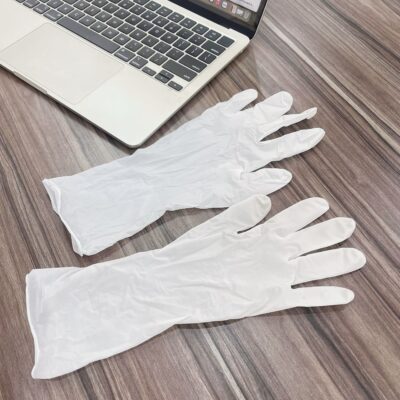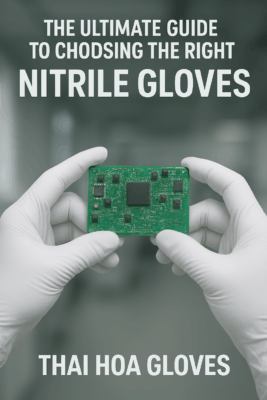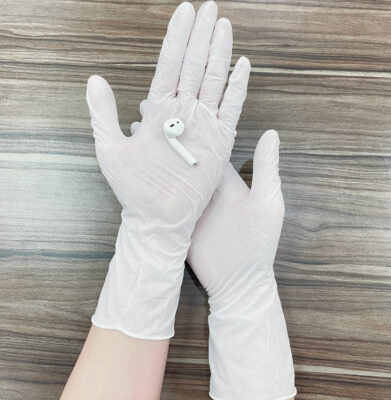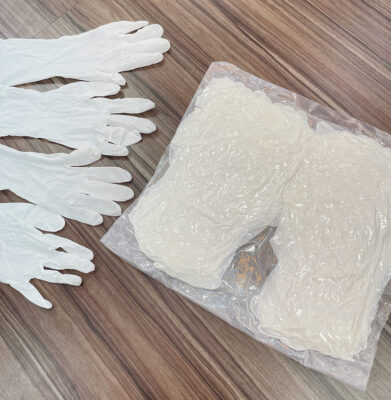In electronic manufacturing and cleanroom environments, electrostatic discharge (ESD) control is essential to protect sensitive components. Among the most common protective solutions are Nitrile ESD gloves and fabric ESD gloves — each designed for specific applications.
Although both are anti-static, they differ in material, performance, cleanliness, and level of protection. Let’s explore how they compare and which one suits your operation best.
1. Material Composition
- Nitrile ESD Gloves:
Made from synthetic nitrile rubber blended with conductive or carbon materials, these gloves effectively dissipate static charges. Nitrile is known for chemical resistance, elasticity, and latex-free safety, making it ideal for sensitive users. - Fabric ESD Gloves:
Usually woven from polyester combined with carbon or copper fibers, fabric ESD gloves provide basic static control. They’re lightweight and breathable but offer limited chemical protection.
2. Static Dissipation Performance
- Nitrile ESD Gloves:
Deliver stable and consistent static discharge, suitable for Class 1000 – Class 10000 cleanrooms. They comply with ASTM, EN, and ISO ESD standards. - Fabric ESD Gloves:
Their static control efficiency depends on humidity and fiber composition. Frequent washing or prolonged use may reduce conductivity.
3. Cleanliness and Protection Level
- Nitrile ESD Gloves:
Low-lint, powder-free, and silicone-free, making them ideal for cleanroom applications such as electronics assembly, semiconductor production, or LCD manufacturing. They also resist oils, solvents, and chemicals effectively. - Fabric ESD Gloves:
May shed fibers and are not recommended for high-class cleanrooms. However, they are breathable, reusable, and cost-effective for non-critical areas.
👉 In short: Nitrile ESD = cleanroom-grade; Fabric ESD = general-use, economical option.
4. Comfort and Handling
- Nitrile ESD: Snug fit, excellent tactile sensitivity for handling small parts, though less breathable.
- Fabric ESD: Soft, comfortable, and airy for long-term wear, but offers less grip and no liquid resistance.
👉 Best choice by environment:
- For high cleanliness → Choose Nitrile ESD.
- For comfort and cost efficiency → Choose Fabric ESD.
5. Nitrile ESD Gloves by Thái Hoà Glove – Reliable Cleanroom Protection
Thái Hoà Glove manufactures powder-free Nitrile ESD gloves certified for Class 1000 cleanroom use, trusted by leading electronics and semiconductor companies in Vietnam.
Key features include:
- Lightly textured surface for firm grip
- Consistent anti-static performance, latex & silicone free
- Compliant with ASTM D6319, ISO 9001, ISO 13485
- Packed in a cleanroom to ensure zero contamination
Conclusion
Both Nitrile ESD and Fabric ESD gloves are essential in managing electrostatic discharge in the workplace.
However:
- Nitrile ESD gloves are ideal for high-level cleanroom environments requiring strict ESD and contamination control.
- Fabric ESD gloves are better suited for light assembly, inspection, or cost-sensitive operations.
Choosing the right glove ensures optimal protection, safety, and productivity in your ESD-controlled area.








